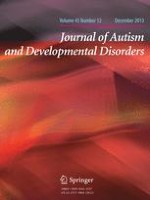01-12-2013 | Original Paper
Grasping Motor Impairments in Autism: Not Action Planning but Movement Execution is Deficient
Gepubliceerd in: Journal of Autism and Developmental Disorders | Uitgave 12/2013
Log in om toegang te krijgenAbstract
Different views on the origin of deficits in action chaining in autism spectrum disorders (ASD) have been posited, ranging from functional impairments in action planning to internal models supporting motor control. Thirty-one children and adolescents with ASD and twenty-nine matched controls participated in a two-choice reach-to-grasp paradigm wherein participants received cueing information indicating either the object location or the required manner of grasping. A similar advantage for location cueing over grip cueing was found in both groups. Both accuracy and reaction times of the ASD group were indistinguishable from the control group. In contrast, movement times of the ASD group were significantly delayed in comparison with controls. These findings suggest that movement execution rather than action planning is deficient in ASD, and that deficits in action chaining derive from impairments in internal action models supporting action execution.
